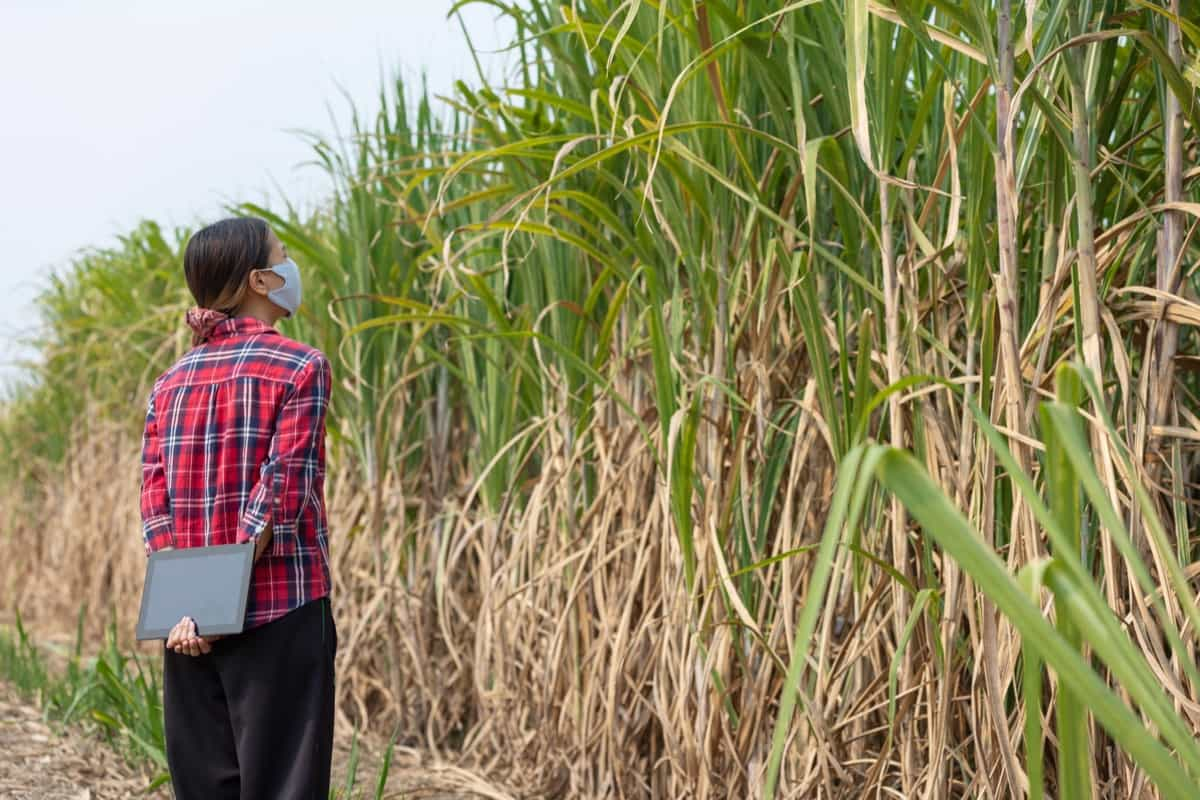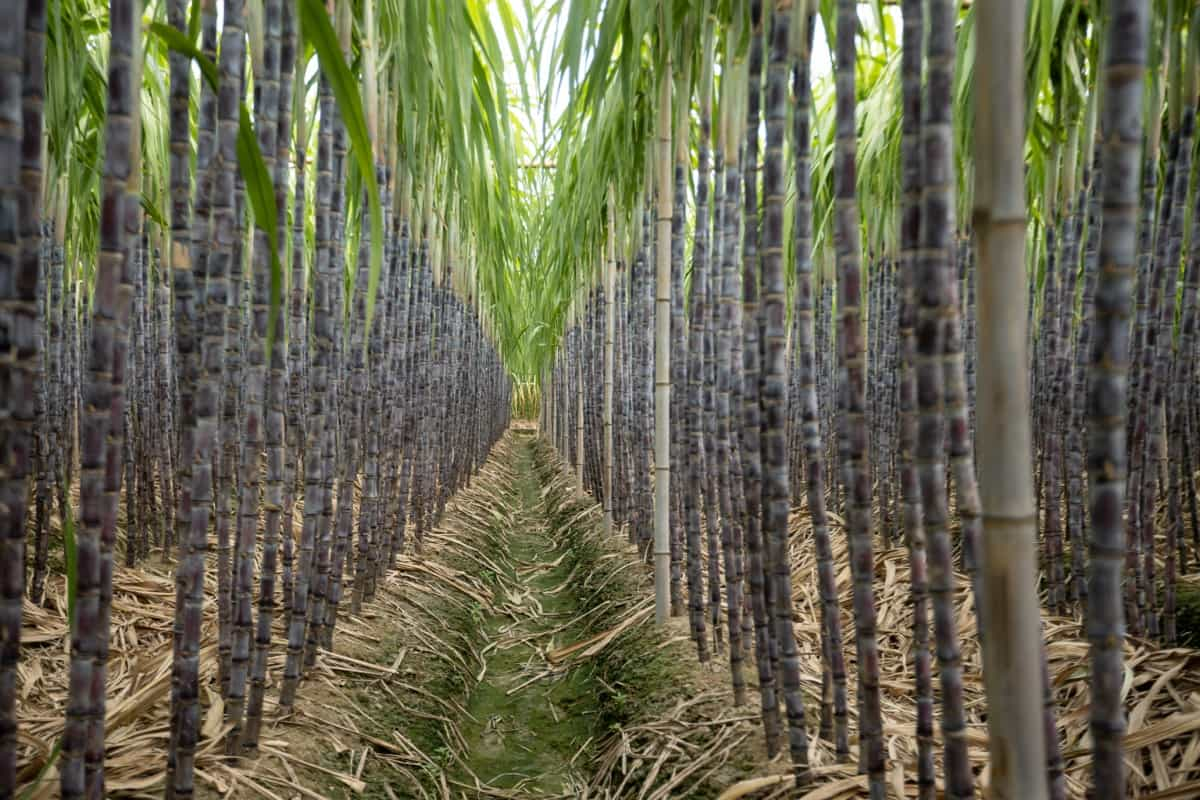Termites are a significant concern for sugarcane fields all over the world. They do a lot of damage to the roots and stalks of the plant. The Sugarcane Termite (Odontotermes lokanandu) is a particularly destructive pest that can cause extensive economic losses for sugarcane growers. Sugarcane Termites are small insects in the family Termitidae and the order Isoptera. They eat the cellulose in plants, which causes structural damage to sugarcane plants.

You can find these termites in many places where sugarcane is grown, such as Asia, Africa, and Australia. Growers must use several methods, such as cultural, biological, and chemical controls, to eliminate Sugarcane Termites. This article will discuss symptoms, causes, impacts, and chemical, cultural, and biological control methods.
Termites Management in Sugarcane
Factors Favoring Growth/ Causes of Termites Spread in the Field
- Termites reside in large colonies and construct elaborate nests underground or on moist, decaying tree stumps.
- Protected by underground passages, they feed away from their nest on plant roots and other materials in fields.
- Termites can harm plants with no other food source, so having much organic matter in the soil is essential.
- Numerous winged males and females with well-developed eyes are produced for swarming by reproductive termites.
- Swarming typically occurs at sunset following heavy rainfall. The winged termites discard their wings, mate, and burrow into soil or wood crevices to establish a new colony.
- Warm temperatures, moist soil, and wood or other cellulose-containing materials promote termite growth and spread.
Life Cycle of Termites
There are several stages in the termite life cycle, including embryos, nymphs, and adults. Termite eggs are typically dull and kidney-shaped and hatch between 30 and 90 days after being laid. Once hatched, nymphs undertake eight to nine molts over six to twelve months. At maturity, termites transform into small, creamy insects resembling ants with dark-colored heads.
The mature termites are responsible for reproduction and colony maintenance. They have a caste system in which workers, soldiers, and reproductives are assigned specific duties within the colony. The queen termite is the largest member of the colony because she deposits eggs and produces offspring.
Host range: Numerous plant species, including crops, trees, and ornamental plants, can be attacked by termites. The specific host range can differ depending on the termite species and location. Termites attack numerous plant species, including sugarcane, maize, sorghum, cotton, and vegetables.
Identification of Termites in Sugarcane in the Field
- To identify termites in sugarcane fields, look for wilting in the upper portions of plants and live insects or tunnels in the roots and lower stems.
- Plants may be hollowed out and filled with soil debris, and termites may be discovered beneath plants lodged in the ground and covered with soil.
- Termites may migrate deeper into the soil during the day, so early morning or late evening examinations are advised.
Damage Symptoms of Termites in Sugarcane
- Termites can attack sugarcane plants at any stage of development, inflicting severe damage.
- Termite damage to the plant’s roots typically manifests as wilting of the plant’s upper sections.
- To confirm the presence of termites, affected plants must be removed and inspected for the presence of living insects or tunnels.
- Termite damage may completely hollow out plant roots and stems, which can be filled with soil debris.
- Under the soil that covers the plants, termites may be discovered if the plants are sheltered from powerful winds.
- When termites are more likely to be near the surface, early morning or late evening is the optimal time to examine plants.
Impact of Termites on Sugarcane Yield
Termites can significantly reduce sugarcane yield. They damage roots and cause wilting and stunted plant growth at all stages. Infestations can ruin crops. Termite damage also lets other pests and diseases in, reducing production quality and yield.
In case you missed it: Early Shoot Borer Management in Sugarcane: Symptoms, Treatment, Chemical, Biological, Natural, and Organic Control

Cultural Management of Termites in Sugarcane
- Managing termites in sugarcane through cultural methods can be an effective strategy.
- Flood irrigation at the time of planting can help reduce termite populations in a field by submerging or driving them away.
- Effective physical methods include locating and eradicating termite colonies and collecting and destroying affected setts in the field.
- These methods may be labor-intensive and time-consuming, but they can aid in reducing reliance on chemical control methods.
- Also, promoting more sustainable and environmentally favorable management practices.
Biological Management of Termites in Sugarcane
- Termites can be effectively controlled by products containing nematodes that attack termites.
- Solutions containing fungi such as Beauveria bassiana or Metarhizium can be applied to termite mounds to control termite infestation.
- Using Neem seed kernel extracts (NSKE) to control termites on trees and field crops has proven effective.
- Pouring wood ash or crushed neem leaves or seeds into termite tunnels can repel them.
Chemical Management of Termites in Sugarcane
- Synthetic insecticides are used to control termite infestations in sugarcane through chemical management.
- Among them are chlorpyrifos, deltamethrin, imidacloprid, lindane, and heptachlor. These chemicals can be injected as solutions into termite colonies or used to treat the soil, setts, and furrows at planting time.
- In addition to fumigation, aluminum phosphate tablets can eliminate termite colonies.
Organic Management of Termites in Sugarcane
- Crop rotation can reduce the possibility of termite infestations.
- The organic matter content in the soil can increase soil fertility and promote the growth of termite-controlling microorganisms.
- Maintaining appropriate soil moisture levels and avoiding waterlogging can assist in preventing termite populations.
- Botanical extracts, such as neem oil and garlic, can serve as natural termite repellents and help prevent termite infestations.
Preventive Measures for Control of Termites
- Farmers can prevent their infestation through a wide range of preventative measures. It is essential to ensure that the soil is not barren and dry but rather that it is abundant in organic matter.
- Regular plant inspections, particularly in the early morning or late afternoon, can help detect signs of infestation and stop its spread.
- Remove and destroy all affected plants and plant components. Maintaining healthy plant growth conditions by avoiding water stress and damage can also aid in preventing termite infestations.
- Early crop harvesting can also reduce termite damage. Plant residues and detritus must be removed after harvest.
- Plowing fields can ruin termite nests and tunnels, exposing them to ants and birds as predators.
- In addition to crop rotation and intercropping, crop rotation, and intercropping can help prevent termite infestation.
In case you missed it: Internode Borer Management in Sugarcane: Symptoms, Treatment, Chemical, Biological, Natural, and Organic Control

Conclusion
Termites harm and reduce sugarcane yields. Termite control requires early identification and management. Depending on the infestation and the farmer’s need to prefer, cultural, physical, biological, natural, and chemical ways can avoid or manage termite populations in sugarcane fields.
- Deworming Schedule for Dogs/Puppies: A Beginners Guide
- How to Prevent and Control Parasites in Goats
- Beneficial Insects in Pest Management
- Natural Solutions for Pest Control in Flower Gardens
- Types of Fungicides Used in Agriculture
- Common Issues in the Fruit Development Stage of Pomegranate Farming
- Fruit Development Issues in Papaya: Easy Solutions and Treatment
- Soil-Borne Diseases and How to Protect Your Plants
- Practices to Prevent Disease Spread in the Garden